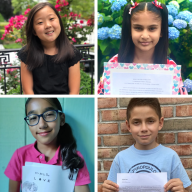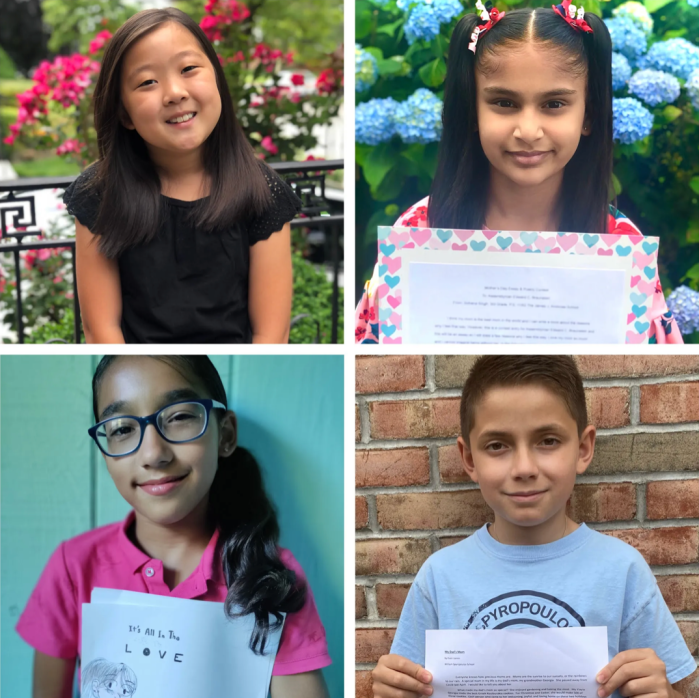But she didn’t speak any English.
Kandic, a 17-year-old senior at Long Island City High School, fled from her home in…
By Dustin Brown
When Selma Kandic started sixth grade in New York City, she borrowed a new book every day from the library of teacher Greg Winter.
But she didn’t speak any English.
Kandic, a 17-year-old senior at Long Island City High School, fled from her home in Sarajevo to the United States in 1995, settling first in the Bronx and moving to Astoria eight months later.
The book-a-day habit paid off. Kandic was one of 13 students chosen from a pool of nearly 1,500 applicants to receive a $6,000 annual college scholarship from The New York Times College Scholarship Program, the second prize in a competition that also awarded $12,000 annual grants to six top winners.
“We’re looking for academic achievement in the face of significant obstacles, extraordinary obstacles,” explained Ria Coyne, an independent educational consultant who coordinates the scholarship for The Times. “People whose parents have degrees in the United States are not favored, because the presumption is that the family has already gotten to a different level.”
Kandic lives with her parents and her older brother in a small but cozy apartment off 30th Avenue in Astoria, a neighborhood where she said they can live “just like we did in Bosnia,” surrounded by immigrants from the former Yugoslavia and Eastern Europe.
Tokens of her successes blend innocuously with the tea set and glassware that line the china cabinet. Above one couch hangs a framed photograph of herself and hundreds of other students attending a youth summit in Washington. Three copies of “Who’s Who of American High School Students” sit on a shelf, one for each year in which she was listed; some Tae Kwan Do ribbons hang from a trophy sitting atop the case.
The Times scholarship application is sent to every high school in the city, and Kandic was handed hers by college adviser Carolyn Weisfeld, who is so impressed by her writing that she tries to pass all essay competitions her way.
Modesty prevents Kandic from making too much of her writing talent.
“I really cannot say I’m a writer,” Kandic said. “I do not sit down and do it for fun.”
Still, writing is a passion she returns to tirelessly in conversation, and for good reason. Not many high schoolers write pieces that turn heads at The New York Times.
“We were very impressed with her writing,” said Greg Winter, a Times reporter who served on the selection committee. “She had a natural flair with language and a great capacity to present evocative images, and we thought she had obvious potential to be a journalist.”
Though she said her strength is prose (“because I have a lot to talk about”), Kandic credited a program at the New York State Summer Young Writers’ Institute in Silver Bay with opening her eyes to poetry.
She recently even penned a sonnet — “a girlie kinda poem about a boy,” she said, although which boy she wouldn’t reveal.
With “I love boys” emblazoned on her pink shirt, she chats enthusiastically about subjects ranging from molecular biology to theater and gymnastics. Nothing in her comportment suggests the hardship of growing up amid war in Bosnia, when simply attending school was a risk she chose to take, a defiant decision to maintain the normalcy of life in the face of war.
“A lot of kids couldn’t go to school. Their parents were too afraid to let them go because there was a possibility of being killed any time, not only by snipers but by unexpected grenades and shells falling,” she said.
“But I did go to school. My first classes were held in a house — very primitive, but they tried.”
Mary Ann Franklin, an English teacher whom Kandic called “a role model since I met her,” said the memories of war in Bosnia seem to have pushed her toward her goals at a faster pace than most of her classmates.
“It made her mature faster and see what’s of value to her,” Franklin said. “She doesn’t go along, she’s not one of those things who just floats along in the street. She makes her own way.”
With a 92 academic average and a No. 3 ranking in a class of more than 430 students, she’s hoping to make her way this fall to Columbia University, which is sending out its admissions decisions April 4.
Though obviously a strong candidate, Kandic is anxious, to say the least. She’s much quicker at pointing out others’ accomplishments than her own.
“Did you read the article?” she said, gesturing at last Thursday’s New York Times that profiled the six students who won the top prize. “They’ve been through so much, they deserve this.”
So said the girl who risked sniper fire to attend the fourth grade.
Reach reporter Dustin Brown by e-mail at Timesledgr@aol.com or call 229-0300, Ext. 154..

































